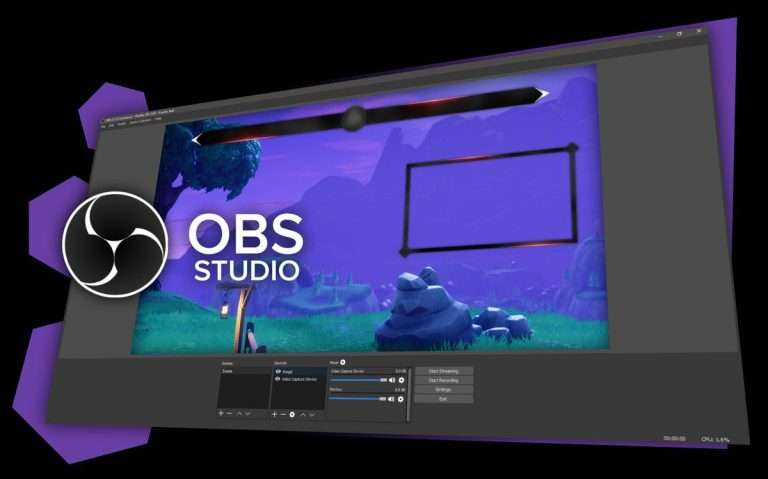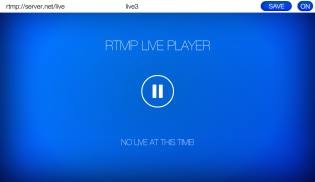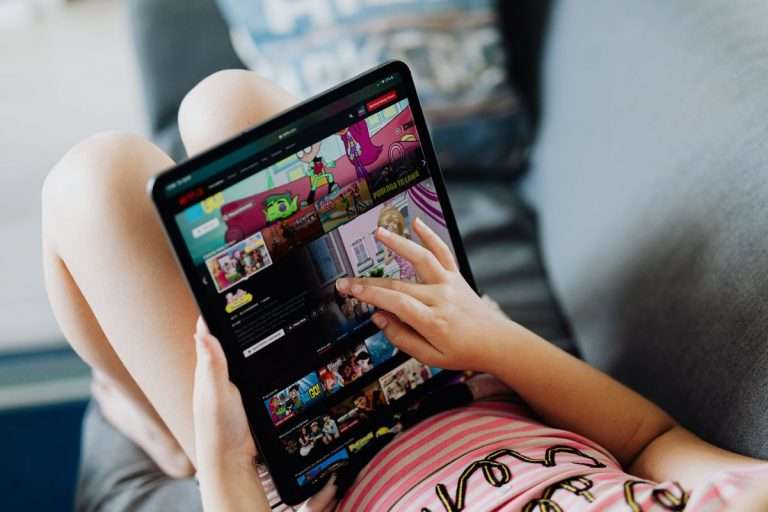The Do’s and Don’ts of Live Stream Simulcasting
Live stream simulcasting presents unique opportunities and challenges for content creators. By broadcasting across multiple platforms simultaneously, creators can maximize their reach and engage with a broader audience. However, to ensure a successful simulcast, there are several technical, logistical, and strategic considerations to keep in mind. This article aims to provide a comprehensive guide on the do’s and don’ts of live stream simulcasting, helping creators navigate the complexities and enhance their live streaming experience.
Key Takeaways
- Understand and adhere to the video encoding specifications of each platform to avoid issues such as video drops and poor stream quality.
- Regularly update streaming software to prevent security vulnerabilities and ensure compatibility with the latest streaming technologies.
- Optimize bandwidth usage by leaving a buffer for other internet activities, and consider cloud-based multistreaming solutions to reduce hardware strain.
- Engage with audiences across different platforms by developing strategies for simultaneous interaction and leveraging analytics to measure engagement.
- Be aware of platform-specific limitations and balance stream quality with accessibility, while also being prepared to troubleshoot common simulcasting issues.
Mastering the Technicalities of Simulcasting

Understanding Video Encoding for Multiple Platforms
When you’re diving into the world of live stream simulcasting, it’s crucial to grasp the nuances of video encoding. Don’t make the mistake of streaming at the highest settings and expecting every platform to handle it seamlessly. Consumer-grade streaming services may falter with high-quality live streams, leading to interruptions or poor video quality. It’s essential to stay within the recommended settings to ensure a smooth experience.
Your choice of encoder also plays a pivotal role in determining the bitrate and, consequently, the stream’s quality. Software encoders come in various price ranges, while hardware encoders might be an option if your budget allows. Remember, the right encoder for you depends on your specific needs and setup.
For a superior viewer experience, consider delivering multiple video streams at different resolutions, like 720p or 360p. This allows viewers to enjoy the best possible quality their internet and device can handle. Here’s a quick rundown of codec preferences:
- Opus: Supports constant and variable bitrate encoding from 6 kbps to 510 kbps.
- H264: Commonly used for peer-to-peer and conference calls.
Keep in mind that encoding is more resource-intensive than decoding. You may need to adjust the maximum encoding resolution based on your hardware capabilities.
The Importance of Regular Software Updates
Keeping your software up-to-date is crucial for a seamless simulcasting experience. Regular updates ensure that your system is protected against the latest threats and runs efficiently. It’s not just about security; updates can also bring new features and improvements that can enhance your stream’s quality. Remember, outdated software can be a bottleneck in your streaming setup.
Live streaming technology is constantly evolving, and staying current with software updates is a key part of that evolution. By doing so, you’re not only safeguarding your content but also ensuring the best possible experience for your viewers. Here’s a simple checklist to help you stay on top of updates:
- Check for software updates before each stream
- Schedule regular system maintenance
- Review and apply recommended software versions
Keep in mind that neglecting software updates can lead to performance issues and security vulnerabilities. Make it a habit to check for updates regularly, so you’re never caught off guard during a live stream.
Optimizing Bandwidth for Smooth Streaming
When you’re live streaming to multiple platforms, bandwidth is your lifeline. It’s essential to strike a balance between quality and reliability. A common misconception is that a higher bitrate always means better quality. However, this isn’t the case if it leads to instability. Instead, aim for a smooth stream, even if it means settling for a lower resolution like 720p, rather than pushing for 4K and risking interruptions.
Remember, your audience values a stable stream over pixel-perfect resolution. It’s better to have a consistent 720p stream than a 4K broadcast that’s prone to freezing.
Here’s a quick checklist to help you optimize your streaming settings:
- Review platform-specific guides for bitrate optimization.
- Test different encoder settings to find the sweet spot for your content.
- Monitor your stream’s performance and adjust the bitrate accordingly.
- Leave a buffer of 35-40% of your internet connection’s speed to account for fluctuations.
By following these steps, you can ensure a seamless viewing experience across all platforms.
Setting Up for Success

Choosing the Right Equipment and Software
When you’re diving into the world of live streaming, the right equipment and software are pivotal to your success. Think of your setup as the backbone of your stream; without it, everything else falls apart. Start with the essentials: a reliable camera, microphone, and lighting. But don’t stop there; your choice of encoder can make or break the quality of your stream.
Software encoders are a great starting point, offering flexibility and a range of price points. As you grow, consider investing in hardware encoders for enhanced performance. Remember, the best streaming setup evolves with your needs, so be prepared to update and upgrade as you go.
Keep your drivers and operating system up to date to avoid any hiccups during your live stream.
Lastly, don’t overlook the importance of a robust internet connection. Here’s a quick checklist to ensure you’re on the right track:
- High-quality camera and microphone
- Professional lighting setup
- Reliable encoding software or hardware
- Updated drivers and operating system
- Strong and stable internet connection
The Benefits of Cloud-Based Multistreaming Solutions
When you’re juggling multiple streams across various platforms, cloud-based multistreaming solutions can be your best ally. By offloading the heavy lifting to the cloud, you alleviate the pressure on your local hardware and bandwidth. This means you can focus on delivering top-notch content without worrying about the technical constraints of your setup.
Italics aren’t just for emphasis; they’re a reminder that flexibility is key in live streaming. With cloud-based services, you gain the agility to adapt to different streaming requirements with ease. Plus, you’re not alone—many services offer guides to help you optimize your settings for the best streaming experience.
Remember, reaching a diverse audience is crucial. Cloud-based multistreaming empowers you to connect with viewers across platforms, enhancing your exposure and engagement.
Here’s a quick checklist to ensure you’re getting the most out of cloud-based multistreaming:
- Ensure your drivers and OS are up to date.
- Choose a service that offers comprehensive APIs and SDKs for customization.
- Look for solutions that provide resources like guides and webinars for continuous learning.
Creating a Dedicated Streaming Environment
When you’re ready to take your live stream simulcasting seriously, creating a dedicated streaming environment is a game-changer. Think of it as your personal broadcast studio, where every element is tailored to support a high-quality stream. Start by ensuring your environment is quiet and free from interruptions. This means soundproofing if necessary and setting up ‘On Air’ signs to prevent unexpected disturbances.
Clear off your network to give your stream priority. A dedicated internet connection can significantly reduce the risk of lag or disconnection. If that’s not feasible, at least ensure other devices are disconnected during your stream to maximize available bandwidth.
Remember, your streaming space is not just a physical location but a technological setup. It should be optimized to handle the demands of simulcasting across various platforms.
Here’s a quick checklist to help you establish your environment:
- Soundproof your space to avoid external noise.
- Use ‘On Air’ signs to minimize interruptions.
- Secure a dedicated or prioritized internet connection.
- Regularly update your streaming software.
- Have a baseline setup for your streams that can be easily replicated.
By dedicating time and resources to create this environment, you’re setting yourself up for a smoother, more professional streaming experience.
Maintaining Stream Health and Security

Closing Unnecessary Applications and Background Processes
When you’re live streaming, every bit of computing power counts. You want to ensure that your system is laser-focused on delivering the best stream possible. That means closing any applications that aren’t essential to your broadcast. Remember, the only thing that should be uploading during your stream is your encoder—or, if you’re a game streamer without a dedicated streaming machine, the encoder and the game connection.
Malware and ads running in the background can severely impact your stream’s performance. Make it a priority to eliminate these resource hogs before going live.
It’s also crucial to keep your network as clutter-free as possible. If you can, disconnect other devices from your internet connection to prevent them from siphoning your upload speed. Here’s a quick checklist to help you prep:
- Start by pressing the Windows key + X and selecting Task Manager.
- Inside the Processes tab, identify and close unnecessary applications.
- Check for any unusual CPU consumption that might indicate hidden processes.
- Ensure your antivirus software is up-to-date and run a pre-stream scan.
By taking these steps, you’re not just optimizing your stream; you’re safeguarding the quality of your audience’s viewing experience.
Protecting Your Stream from Malware and Interruptions
When you’re live streaming, the last thing you want is for malware or unexpected interruptions to derail your broadcast. Ensure your computer is free of malware by running regular antivirus scans and keeping your security software up to date. This simple step can prevent unauthorized access attempts, curbing malware attacks and safeguarding your content.
It’s crucial to maintain a streamlined system during your live sessions. Close any unnecessary applications to minimize the risk of performance issues and potential security vulnerabilities.
Remember, your streaming setup should ideally be the only thing using your network during a broadcast. If possible, disconnect other devices from your internet to prevent them from consuming valuable bandwidth. Here’s a quick checklist to help you secure your stream:
- Run antivirus scans regularly
- Update security software frequently
- Close unnecessary background applications
- Clear other devices off your network during streaming
By following these steps, you’ll minimize the risk of interruptions and protect your stream from the adverse effects of cyber threats.
Ensuring Network Security and Stability
When you’re live streaming to multiple platforms, the stability and security of your network can’t be overstated. Ensure your network is as robust and secure as possible to prevent any unwanted interruptions. Start by using a wired connection whenever feasible; it’s more reliable than WiFi and can significantly reduce latency issues.
- Use a wired connection for stability
- Clear off other devices from your network
- Regularly update security protocols
Consider the RTMP (Real-Time Messaging Protocol) for your streams. It’s designed to maintain low latency with stable connections, which is crucial for a seamless simulcast experience. Additionally, make sure your network is clear of unnecessary devices that could be hogging bandwidth.
Regularly updating your network’s security protocols is not just a precaution; it’s a necessity in today’s digital landscape.
Lastly, stay informed about the latest security measures and best practices. This includes using federated authentication services and ensuring your streaming setup adheres to the latest Transport Layer Security (TLS) standards.
Engaging Your Audience Across Platforms

Strategies for Simultaneous Audience Interaction
When you’re simulcasting, engaging with your audience in real-time across different platforms can be a game-changer. Start by acknowledging viewers from each platform by name or username; this personal touch can make a world of difference. Use a centralized chat or social media management tool to keep track of all the conversations happening in one place.
Interaction is key, so consider running polls, Q&A sessions, or contests that viewers on all platforms can participate in. This not only boosts engagement but also creates a sense of community among your viewers.
Remember, the goal is to make every viewer feel seen and heard, regardless of the platform they’re using.
Here’s a quick checklist to ensure you’re on the right track:
- Monitor and respond to comments in real-time
- Encourage viewers to interact with each other
- Highlight viewer contributions during the stream
- Use platform-specific features to enhance interaction
By implementing these strategies, you’ll foster a more interactive and enjoyable experience for your audience, which can lead to increased loyalty and viewership.
Leveraging Content Across Different Streaming Services
When you’re simulcasting, it’s crucial to understand that each streaming service has its unique audience and features. You’ll want to tailor your content to resonate with viewers on each platform. For instance, while YouTube might cater to a more general audience, other platforms may be more mobile-centric or niche-focused.
To effectively leverage your content, start by analyzing the demographics and preferences of your audience on each service. This will help you make informed decisions about the type of content to stream and how to present it. Remember, what works on one platform may not work on another.
It’s not just about broadcasting your content; it’s about crafting an experience that feels native to each platform.
Here’s a simple checklist to ensure you’re on the right track:
- Review platform-specific guidelines and optimize your stream accordingly.
- Consider the bitrate and encoding settings that best suit each service.
- Engage with your audience in a way that aligns with the platform’s culture.
By taking these steps, you’ll maximize your reach and impact across the digital network, turning your live stream into a multistreaming success.
Measuring and Analyzing Viewer Engagement
When you’re simulcasting, it’s crucial to keep a pulse on how your audience is engaging with your content across different platforms. Viewer engagement metrics are your compass; they guide you in understanding what resonates with your audience and what doesn’t. Start by tracking basic metrics such as view counts, likes, and chat activity. But don’t stop there.
To dive deeper, consider the motivations behind why viewers tune into streams. Are they looking for entertainment, socialization, or information? This understanding can shape your content strategy to better meet audience needs. For instance, a survey on Twitch users’ motivations revealed that being entertained was the top reason for watching streams.
Here’s a simple way to categorize viewer motivations:
- Entertainment
- Socialization
- Information
- Alternative to television
Remember, the goal is not just to collect data, but to interpret it and adapt your strategy accordingly. Engagement data should inform your content creation, helping you to tailor your streams to audience preferences.
By regularly reviewing these insights, you can refine your approach, ensuring that your simulcast isn’t just reaching viewers, but truly engaging them.
Avoiding Common Pitfalls of Live Stream Simulcasting

Navigating Platform-Specific Limitations and Requirements
When you’re simulcasting, it’s crucial to be aware of the unique limitations and requirements each platform imposes. Each service has its own set of rules, from copyright restrictions to mature content guidelines. For instance, Twitch has a detailed structure for streamers, users, and partner programs, while Microsoft Teams enforces specific limitations on app sharing and peripheral support.
- Here’s a quick checklist to keep in mind:
- Review the platform’s content moderation policies.
- Understand the restrictions on sharing and peripherals.
- Check for any platform-specific features that may not be available.
Remember, failing to adhere to these rules can result in your stream being restricted or even taken down. So, take the time to familiarize yourself with the policies and technical requirements of each platform you plan to use. This will help you avoid any unwelcome surprises and ensure a smooth streaming experience for your audience.
While it’s tempting to focus solely on the content of your stream, neglecting the technical and legal aspects can quickly derail your efforts. Stay informed and compliant to keep your streams live and engaging.
Balancing Quality and Accessibility for Diverse Audiences
When you’re simulcasting, you’re juggling the expectations of a diverse audience. Each platform has its own quirks and optimal settings, and it’s your job to find the sweet spot. You might be tempted to max out your video settings, but remember, not all platforms will handle high-bitrate streams well. It’s crucial to strike a balance between bitrate and resolution to ensure a smooth experience for all viewers.
- Check each platform’s guidelines for recommended settings.
- Test different bitrates and resolutions before going live.
- Monitor your stream’s performance across devices.
Remember, a stable stream at a slightly lower quality is better than a high-quality stream that’s buffering.
Understanding the trade-off between bitrate and resolution is key. A high bitrate can mean better quality, but it can also lead to buffering if viewers’ internet can’t keep up. Conversely, a lower bitrate might be more accessible but at the cost of visual clarity. It’s a delicate dance, and your goal is to find the harmony that works for everyone.
Troubleshooting Common Simulcasting Issues
When you’re live streaming to multiple platforms, you’re bound to run into a few hiccups. Always check your internet speed before you start streaming to avoid technical issues during your live broadcast. If you’re experiencing lag or quality degradation, consider the following steps:
- Ensure that your encoding settings are optimized for each platform.
- Verify that your software is up to date.
- Close any unnecessary applications to free up CPU and bandwidth.
Remember, a successful stream relies on a stable and secure network. Make sure your setup isn’t competing with other devices on the same network.
If you’re still facing issues, it might be time to look at your hardware. Are you pushing the limits of your current setup? Upgrading your equipment could provide a smoother streaming experience. Lastly, don’t forget to consult platform-specific forums and support centers; they can be a goldmine for troubleshooting tips tailored to your situation.
Wrapping Up the Simulcast Saga
As we’ve journeyed through the do’s and don’ts of live stream simulcasting, it’s clear that the devil is in the details. From ensuring your encoding settings are in harmony with the platforms you’re using, to keeping your network as clutter-free as possible, every step counts towards a smooth streaming experience. Remember to update your software, clear out any malware, and consider cloud-based solutions to ease the load on your hardware. Whether you’re a content creator looking to expand your reach or a business aiming for maximum audience engagement, these tips are your trusty sidekicks. So, before you hit that ‘Go Live’ button, take a moment to review your setup, and you’ll be well on your way to simulcasting success!
Frequently Asked Questions
What should I consider when encoding video for multiple platforms?
Don’t just output video at the highest settings; many platforms struggle with on-the-fly encoding and may drop or degrade your stream. Stay within the recommended specifications to ensure smooth delivery.
Why is it important to regularly update streaming software?
Regular updates ensure that your streaming software remains compatible with various platforms, fixes known bugs, and improves overall performance and security.
How can I optimize my bandwidth for live streaming?
Allocate enough bandwidth for the stream while leaving a buffer for other internet activities, like gaming or video conferencing, to prevent lag and buffering issues.
What are the benefits of cloud-based multistreaming solutions?
Cloud-based solutions can reduce the strain on your hardware and bandwidth, making it easier to simulcast to multiple platforms simultaneously with better stability and audience reach.
How can I protect my live stream from malware and interruptions?
Close unnecessary applications and background processes, use reliable antivirus software, and regularly scan for malware to maintain a clean and secure streaming environment.
How do I engage audiences when simulcasting across different platforms?
Use strategies for simultaneous interaction, such as addressing comments from multiple platforms, tailoring content for each service, and analyzing engagement metrics to refine your approach.






